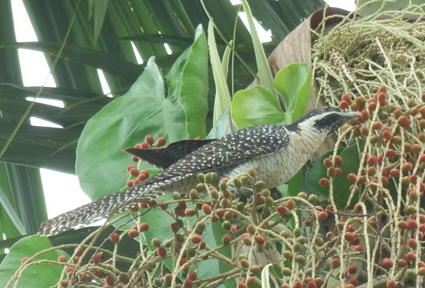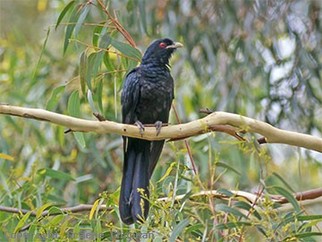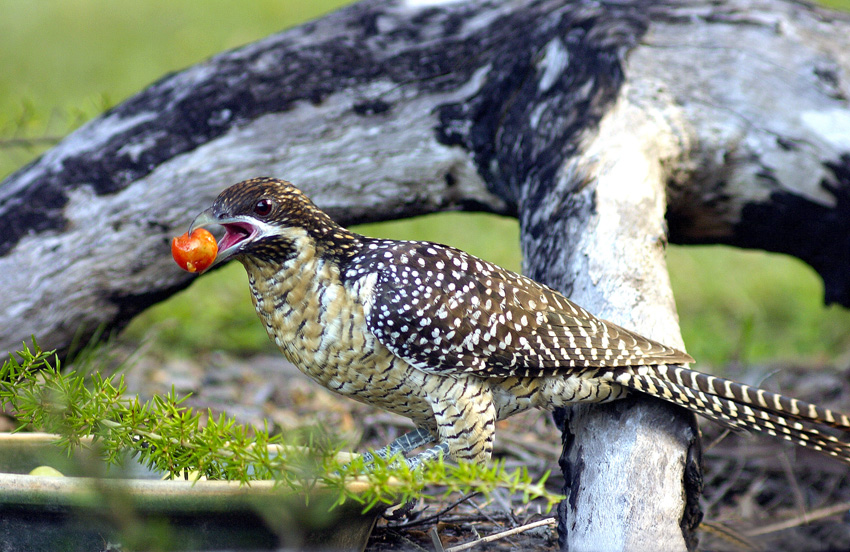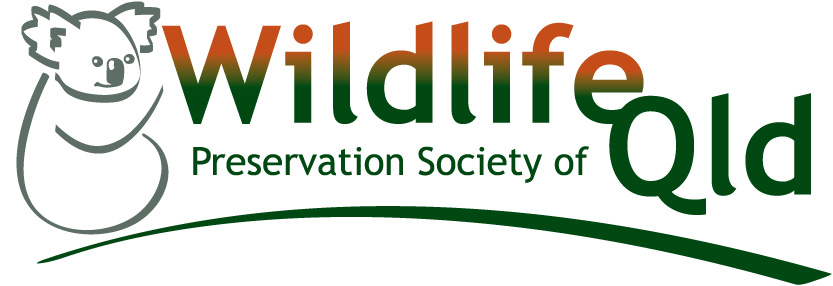| RAINBIRD: The call of the koel is a familiar sound when rain is on the way. Yvonne Cunningham photographed this juvenile koel in her nursery garden at Coquette Point just before the recent heavy rains. | WILDWATCH by LAWRIE MARTIN Despite many people dismissing the concept of some animals being able to predict – with some accuracy – future weather events, conversation has revealed a growing band of district residents who are starting to accept animals have an in-built barometer which rings alarm bells when dramatic meteorological changes are afoot. Members of this expanding band claim resident insects, such as ants for example, were busily gathering and storing food with far more intensity than usual several days before Tropical Cyclone Yasi struck with all its fury on that eventful day in February last year. |
It was indeed remarkable that birds which were active in most areas of this region for weeks after Christmas, disappeared without trace several days before the plus-300kph gale bore down on the coastline. Had they, like the ants battened down the hatches or did they fly to safer grounds?
In many instances birds took some weeks after Yasi to return to their territories with some finding the area in which they dwelt severely damaged with much of their natural food sources destroyed. This would certainly have presented problems, especially if they were unable to find a new territory.
But this forewarning of trouble weather-wise does not only apply to extreme changes in the climate, because for most of the year animals throw out indications of changes. One easily recognised warning is provided by koels, or storm birds as they are known locally.
Their distinctive, rising “wirra wirra” or “coo-ee” calls were particularly noticeable before and during the recent period of heavy rain, usually in early morning or evening, and sometimes at night.
The koel, or Indian koel to give its proper name, is a cuckoo. It does not make a nest but lays its eggs in the nests of other birds.
The female usually lays a single egg in the nest of its choice, always when there are eggs already in it. The theory is that this is because with eggs already in the nest, the nest is less likely to be abandoned. Noticeably, the koel’s egg always bears a distinct resemblance to the eggs already in the nest. Orioles, friar birds and magpie larks (peewees) are often chosen.
In fact, the koel is a commuter, wintering in New Guinea then coming to Australia during the summer to breed. Cyclone Yasi would have occurred in the heart of its breeding season, but since the koel leaves the hatching of its eggs and the rearing of its chicks to other birds, this presumably would not have worried it.
Koel chicks mature rapidly and are strong and forceful so, as with other cuckoos, it is often the koel youngster which is reared by the adoptive parents, their own chicks either dying of starvation or being tipped out of the nest by the stronger, rougher koel.
People often ask what happens when the chick of a cuckoo fruit eater, like the koel, is reared by an insect eating foster parent. The answer is simple. The koel chick eats what it is given and, as with other cuckoos, does all it can to make sure it survives. It goes into a mainly vegetarian diet when it becomes an adult. In the wild world, individual survival is everything.
| Interestingly, koels have often been observed feeding in fruiting trees with the species which foster their chicks. They do appear to favour rainforest and thick vegetation, though some birds will fly further south. They have occasionally been spotted in Victoria, and there have even been sightings in New Zealand. The males especially are easily identified, being rich, shiny black with red eyes. |
She is also more discreet by nature. After all, she has to secrete her eggs into other birds’ nests. With some cuckoo species the male will distract the chosen host parent from the nest while the female nips in and deposits her egg, but we are unsure if this applies to the koel.





